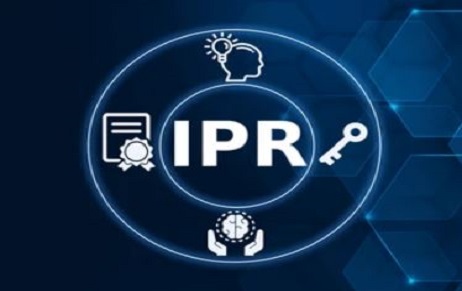Introduction In the realm of obtaining a patent right, conducting a ‘novelty search’ stands as…
Patenting of Traditional Knowledge in Light of the Turmeric Case
Traditional Knowledge is a living corpus that has evolved within a small society from generation to generation. In an amusing way of expressing it, it cannot be protected traditionally owing to the unoriginality of its preservation and the fact that it is not subject to the restricted periods of intellectual property protection. Consequently, it has a live nature. Traditional Knowledge refers to methods that are not protected by traditional intellectual property laws and that are frequently passed down the generations informally as a sharing of information with ancient cultural origins. The protection of this information is a goal shared by many countries, and India has made a significant contribution by creating the Traditional Knowledge Digital Library (TKDL) Access (Non-Disclosure) Agreements with several foreign patent offices, including the USPTO.
A. Arguments of the applicants
The inventors claimed that they had invented a method of promoting healing of a wound in a patient, by way of administering an effective amount of turmeric to the patient, orally or applied topically.
B. Arguments of CSIR
CSIR approached the USPTO to revoke the patent applied for turmeric under the capacity of an interested person who can institute re-examination proceedings on grounds of prior art to prove lack of novelty in the invention patented. Although, the various forms and uses of turmeric was common knowledge in every Indian household for ages, it was difficult to source published information on the use of turmeric powder through oral as well as topical route for wound healing.
C. USPTO Decision
USPTO revoked the turmeric patent on the ground of prior art, as the evidence submitted by CSIR proved a clear lack of novelty, non-obviousness and inventive step which are essential pre-requisites for any patent to be granted. Further, the holding of the USPTO that turmeric powder and the paste were equivalent, showed that the “Person Having Ordinary Skill in the Art” test (PHOSITA) had been satisfied, i.e., whether the said invention would have been obvious to a ‘Person Having Ordinary Skill in the Art’. This standard is intended to both prevent the patentability of trivial inventions and preserve
patentability of meritorious ones.
Biopiracy as a new form of commercial exploitation
Since the advent of biotechnological innovation and the mushrooming of pharmaceutical patenting, traditional knowledge based on biochemical/genetic resources have been commercially exploited in a bid to assert control over what has already been accepted in normal parlance as traditional knowledge by establishing a false sense of novelty and non-obviousness. This phenomenon, which came to be known as Biopiracy, refers to the
“appropriation of the knowledge and genetic resources of farming and indigenous communities by individuals or institutions seeking exclusive monopoly control (usually patents or plant breeders rights) over these resources and knowledge”.
In the Turmeric Case, the USPTO’s decision to grant patenting rights to turmeric based wound healing techniques was heavily condemned and termed as an act of Biopiracy. Upon review, the USPTO considered the nuances of the traditional knowledge that pertained to the usage of turmeric as a wound healing substance for centuries in Indian households.
Pioneering the idea of protecting traditional knowledge
Claims against the grant of patent established the presence of traditional knowledge through a multitude of different evidences admitted during the hearing, inter alia, ancient texts, history manuals and common practices in Ayurvedic medicine. It was categorically established that the Curcuma longa (Zingiberaceae) or the turmeric rhizomes were commonly used in Indian households for its wound healing properties. These evidences established the absence of any concrete existence of novelty and non-obviousness with regard to the purported discovery made by the two scientists who applied for the aforesaid patent, clearly established a case for the presence of traditional knowledge and warranted the revocation of the patent certificate. In earlier cases, such as the dispute over the usage of Neem related substances as pharmaceutical product for fungicidal treatment also garnered traction, stimulating a bitter transcontinental debate about the ethics of IP and patent rights by the European Patent Office and the Indian government. The commercial exploitation of neem through patent law was deemed an act of biopiracy, given the usage of neem as a traditional remedy for fungicidal treatment for centuries in Indian households.
Patentability of Traditional Knowledge
Traditional knowledge has been characterised in another way from the perspective of patents. One may say that it was knowledge that required action within an existing community or collection of communities, whether written or unwritten. Documenting traditional knowledge, however, will stop it from being appropriated, serve as evidence to stop it, and also put it into the public domain, which will help another major corporation commercialise it at the expense of the indigenous community or the traditional knowledge holder. Furthermore, according to Section 3(p) of the Patents Act of 1970, Traditional Knowledge cannot be regarded as a novel and inventive invention.
The status of Traditional Knowledge is bestowed when a prior form of intellectual property is in the Public Domain hence the monopolisation of such information is a violation of the Patents Act. This eventually led to the establishment of the TKDL for documentation and eventual protection. For cases of undocumented TK however, ownership rights arise for the exploitation of such intellectual property by patenting. Due to the absence of law for further protection of undocumented TK it is easy to prove novelty of invention which is mitigated by the Indian Patent Office by releasing the list of TK applied but pending recognition.
India had taken action to record and disseminates all such information and keep it kept in an electronic library called the Traditional Knowledge Digital Library in order to avoid the patenting of Traditional Knowledge (TKDL). All of the scientific data that is categorised in relation to foreign patents may be found in the TKDL.
Traditional Knowledge that has not been recorded will be subject to patent law. The Indian Patent Office released a circular in an effort to address this issue, stating that the pending patents in the relevant field will be made public online and that any objections can be filed at the Patent Office.
Balance between Community Interests and Individual Profits
To attain a balance between individual gain and community good the concept of benefit sharing is introduced by the Biodiversity Act under section 2a with 6(2). According to the law, any invention or product created with information derived from pre-existing knowledge for commercial advantage must provide some type of commission for the individuals claiming the knowledge.
- The ‘Jeevani’ and ‘Kani’ Tribes case
In this case, a medication made from Kerala’s Trichopus Zeylanicus (Arogyapaacha) is being patented. The Tropical Botanic Garden and Research Institute (TBGRI) in Kerala applied for the patent in order to strengthen the immune system and provide users more energy. The Kani Tribe uses this traditional medication, which they refer to as “JEEVANI.” The idea of benefit sharing was used, and the tribe received payment for producing the medication.
This, however, is not applicable in the present situation. As a result, since “Beneficial amounts and Use” of turmeric are not portrayed physically, they cannot be patented. This leads to a filling of the gap generated in this situation. Benefit sharing was conceivable in circumstances when there is a special tying to a community or indigenous group, as evidenced in the “Kani,” “Yoga,” or “Saganeri” examples. For this reason TKDL has gained flack for making claims to commonly found herbs and spices claiming Indian origin which needs to be prevented by creating a strong and statutory yardstick as witnessed in the Turmeric case for the proving of traditional Knowledge as otherwise it will lead to gatekeeping of innovation and progress.
Indian Scenario and Precedents on Traditional Knowledge Protection
The Section 3(p), Patent Act, 1970 categorises traditional knowledge under non-inventions, thereby barring the grant of a patent to traditional knowledge. GI registration can also be an indirect way to protect the traditional knowledge of the Indian local communities (e.g. Palani Panchamirtham and Mizu Betel Vine). In the case Institute for Inner Studies v. Charlotte Anderson the concept Pranic Healing which is a facet of Yoga was held to be part of the traditional knowledge of India and thus barred from being patented on grounds of public knowledge and lack of novelty as per Section 3(p). In Vandana Shiva v. Union of India, the Delhi High Court disallowed patenting of micro-organisms since the patent was based on traditional knowledge of the life-form and of its use. It lacked novelty and was already in prior use. Moreover, the Supreme Court in Maharshi Mahesh Jogi v. State of M.P. acknowledged that traditional knowledge gets legitimacy only if it can be tested on the basis of objectivity, through the senses.
Conclusion
In situations where there exists a specific dating to a community or indigenous population as seen in the ‘Kani’ ‘Yoga’ or ‘Saganeri’ cases was that benefit sharing was possible. The Traditional Knowledge was traced to a certain culture. However, in many instances like in bio-piracy as noticed in the present matter as well as the ‘Neem Case’ and ‘Basmati GI case’, the property in question was not native to just one land hence the concept of Benefit Sharing is not possible. For this reason, TKDL has gained flack for making claims to commonly found herbs and spices claiming Indian origin which needs to be prevented by creating a strong and statutory yard stick as witnessed in the Turmeric case for the proving of traditional Knowledge as otherwise it will lead to gatekeeping of innovation and progress.
Author: Arushi Guha – a student at Symbiosis Law School, Pune, in case of any queries please contact/write back to us via email to [email protected] or at IIPRD.




